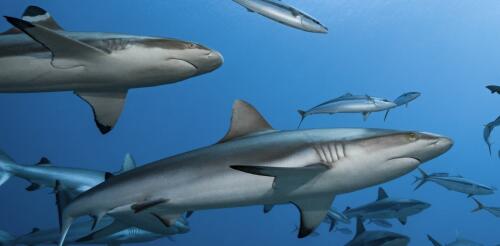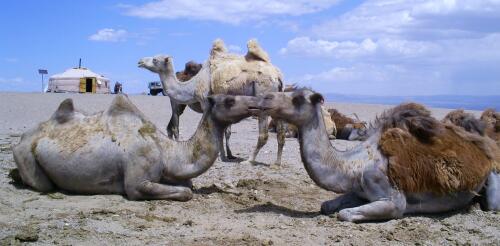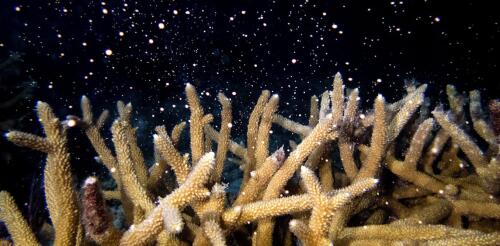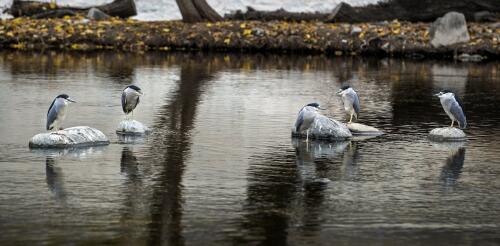Biodiversity
There are more than 500 species of sharks in the world’s oceans, from the 7-inch dwarf lantern shark to whale sharks that can grow to over 35 feet long. They’re found from polar waters to the equator, at the water’s surface and miles deep, in the open ocean, along coasts and even in some coastal rivers. With such diversity, it’s no surprise that sharks serve many ecological functions. For example, the largest individuals of some big predatory species, such as tiger and white sharks, can have an oversized role in maintaining balances among species. They do this by feeding on prey and sometimes by just being present and scary enough that prey species change their habits and locations. In a newly published study, colleagues and I surveyed decades of research on sharks’ ecological roles and considered their future in oceans dominated by people. We found that because sharks play such diverse and sometimes important functions in maintaining healthy ocean...
The most significant predictors of bug biodiversity in Los Angeles are proximity to the mountains and temperature stability throughout the year, according to a study we co-authored with Brian V. Brown of the Los Angeles Natural History Museum and colleagues at the University of Southern California and California State University. The project used data from the museum’s BioSCAN project, where volunteers across Los Angeles allowed insect traps to be installed on their property between 2014 and 2018. Arthropod species richness in Los Angeles. Black dots show locations where the BioSCAN project collected bugs between 2014-2018. The color scale shows the predicted number of species, with blue being the least rich and orange being the most rich. Map tiles by Stamen Design, CC BY-SA The analysis showed some surprising results. For instance, land values had little impact on the overall diversity of art...
Fatal attractions are a standard movie plotline, but they also occur in nature, with much more serious consequences. As a conservation biologist, I’ve seen them play out in some of Earth’s most remote locations, from the Gobi Desert to the Himalayan Highlands. In these locales, pastoralist communities graze camels, yaks and other livestock across wide ranges of land. The problem is that often these animals’ wild relatives live nearby, and huge, testosterone-driven wild males may try to mate with domestic or tamed relatives. Both animals and people lose in these encounters. Herders who try to protect their domestic stock risk injuries, emotional trauma, economic loss and sometimes death. Wild intruders can be displaced, harassed or killed. These clashes threaten iconic and endangered species, including Tibetan wild yaks, wild two-humped camels and Asia’s forest elephants. If the wild species are protected, herders may be forbidden from chasing or harmin...
The world’s coral reefs are like underwater cities, bustling with all kinds of fish and sea animals. Coral reefs cover less than 1% of the ocean, but they support an estimated 25% of all marine species, including many important fish species. The economic value of the services that these complex ecosystems provide is estimated at over US$3.4 billion yearly just in the U.S. Today, rising ocean temperatures threaten many reefs’ survival. When ocean waters become too warm for too long, corals expel the colorful symbiotic algae, called zooxanthellae, that live in their tissues – a process called coral bleaching. These algae provide the corals with food, so bleached corals are vulnerable to starvation and disease and may die if the water does not cool quickly enough. With global ocean heat at record levels, scientists have confirmed that a global coral bleaching event is underway. Since the beginning of 2023, corals have been dying in the Indian, Pacific and Atlantic...
The Earth is losing animals, plants and other living things so fast that some scientists believe the planet is entering its sixth mass extinction. But there’s some surprising good news: Urban areas may be key to slowing down or even reversing this crisis. This idea may seem counterintuitive, since studies show that urbanization is a big driver of biodiversity loss. Cities alter the environment with artificial lighting and noise pollution, which affect many species. And urban land cover is expected to increase by 2.5% globally between 2000 and 2030 as more people move to cities. As one measure of urbanization, half of the continent of Europe is less than 1 mile (1.5 kilometers) from a roadway or railway line. No location on the continent is more than 6 miles (10 kilometers) from these features. But there are ways for cities to use nature-based solutions to slow species loss within their borders. At a major international conference on biodiversity loss in 2022, global lead...




